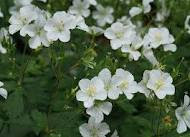Stork’s bill is a member of the Geraniaceae or geranium family, making it a relative of the wild geranium. It is native to Europe , including Britain , North Africa , the Himalayan region and Japan . It was introduced into North and South America by the Spaniards, and is now classed as an invasive weed. It grows to around two feet tall and flowers between June and September, with the seeds ripening between August and October.
It is similar to the Crane’s bill (wild geranium) and in Britain it is sometimes called the Hemlock Stork’s Bill. (However it is not related to hemlock and does not have its toxic properties.)
The young leaves and stems may be eaten raw and added to salads, as they taste a little like parsley when young and tender. They can also be used like spinach and Kang Kong (water spinach), and may be added to soups stews and so on to enhance their flavour. Children often chew the root as you do chewing gum. It is best to harvest the leaves and root before the plant comes into flower. They can be used fresh or fried for later use, although you should check on the conservation status of the plant in your locality before uprooting them.
 The root and leaves are the main parts used in traditional medicine and breast-feeding mothers eat these to increase their milk flow. Externally the decoction of the root is used as an antidote to bites, and to soothe the pain from them; it is also useful for skin infections. In the past an infusion if the plant was used as a remedy for typhoid fever.
The root and leaves are the main parts used in traditional medicine and breast-feeding mothers eat these to increase their milk flow. Externally the decoction of the root is used as an antidote to bites, and to soothe the pain from them; it is also useful for skin infections. In the past an infusion if the plant was used as a remedy for typhoid fever. If you suffer from rheumatism you may want to steep the leaves in your bath water to gain some relief from the pain.
The plant is said to control bleeding (it’s haemostatic) and is used in Mexico to decrease the bleeding after child-birth, and to prevent infection. It has astringent properties as well as antioxidant ones. In Peru it is used by traditional healers to regulate blood pressure (both high and low).
According to one study the plant may have some antiviral properties, but more research is needed.
 The tisane or infusion made from the root and leaves is used to reduce inflammation, and the hot moist leaves may be used in a poultice to reduce swelling.
The tisane or infusion made from the root and leaves is used to reduce inflammation, and the hot moist leaves may be used in a poultice to reduce swelling. In the Bach Flower remedies the crane’s bill is used to relieve obsessive anxiety or worrying and for those who give disproportionate attention to trivial events and small problems. It is said to help them gain a wider and truer perspective on issues which to so many of us are routine events. It helps such people to spend less time worrying about things which they have blown up out of all proportion.
When the Stork's bill is growing in arid conditions, the stem may be red, giving rise to the name the Red-Stem Stork's Bill, although if it is growing in more moist conditions it will have a green stem. A green dye is obtained from the whole plant.

The plant is also called Pin clover or Pin grass (it is no relation to clover) because of its long, thin seed capsules. The seeds have a helix-shaped bristly hairs attached to them and these help them to be dispersed as they stick to the hair of goats and other browsing animals, and to birds’ feathers. The hair also has a corkscrew action which buries the seed in the ground. The hairs are also interesting as they twist or uncurl depending on the humidity in the atmosphere, making them one of nature’s barometers.
















































